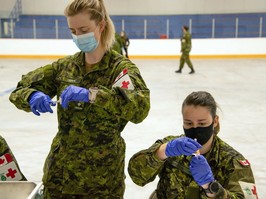physical distancing is crucial to preventing the spread of covid-19, but the two-metre distancing rules are based on outdated science, says british researchers in a
paper published in the bmj this week.the findings pave the way for more flexible physical distancing rules that depend on the level of risk in an environment.“this would provide greater protection in the highest risk settings, but also greater freedom in lower risk settings, potentially enabling a return towards normality in some aspects of social and economic life,” the researchers write.the origins of the two-metre rule began in the 1940s with the advent of photographs of droplets emitted during coughing, sneezing, and talking. a 1948 study of haemolytic streptococci spread found less than 10 per cent of the large droplets could travel as far as 1.7 metres. even though these early studies had inaccuracies, this created the “assumed scientific basis of the 1-2 m distancing rule,” said the study authors.some small studies of sars-cov-2, the virus that causes covid-19, have found that the virus is able to travel farther than two metres, depending on the environment. dry air can make droplets that carry the virus lighter, so they travel further. to date, small, observational studies have supported the possibility of airborne spread of sars-cov-2 but no large study has confirmed that airborne spread can cause disease transmission.instead, transmission is more complex than a single blanket rule. in some instances, droplets with sars-cov-2 can travel up to seven to eight metres from an infected person when they’re breathing out, singing, coughing, or sneezing because of the warmth, moistness, and high momentum of the exhaled air.for example, researchers note that when people are vigorously exercising, heavy panting “produces violent exhalations with higher momentum than tidal breathing,” which can be similar to coughs. heavy breathing and panting will further the distance the droplets can reach. however, this is easily diluted with outdoor air. a preprint study from japan found the risk of transmission is
18.7 times higher indoors compared to outdoors.the indoor factor is also important because not all infected people will be coughing. research has shown that the most viral load happens
days before symptoms even appear.researchers say distancing rules need to account for the different environments, whether it’s indoors or outdoors, how many people are there, what they are doing, and whether they’re wearing face masks. plus, the longer one stays in a place that exposes them to the virus, the more susceptible they are to infection.the highest risk situations are those indoors with poor ventilation, crowds who have prolonged contact time, and those who aren’t wearing face masks. researchers give the example of a crowded bar or nightclub. other epidemiologists have said
movie theatres also pose too high a risk given theatres’ air conditioning and poor ventilation, prolonged time spent with others, and lack of ability to mandate masks in the dark.outdoor areas are the most well ventilated. if you’re indoors, places where people only spend a short amount of time, where everyone is wearing face masks, and where people are mostly silent (not speaking, shouting, singing, and expelling droplets) have the lowest risk of transmission.
dduong@postmedia.com |
@dianaduodon’t miss the latest on covid-19, reopening and life. subscribe to healthing’s daily newsletter coming out of covid.
 2 minute read
2 minute read








